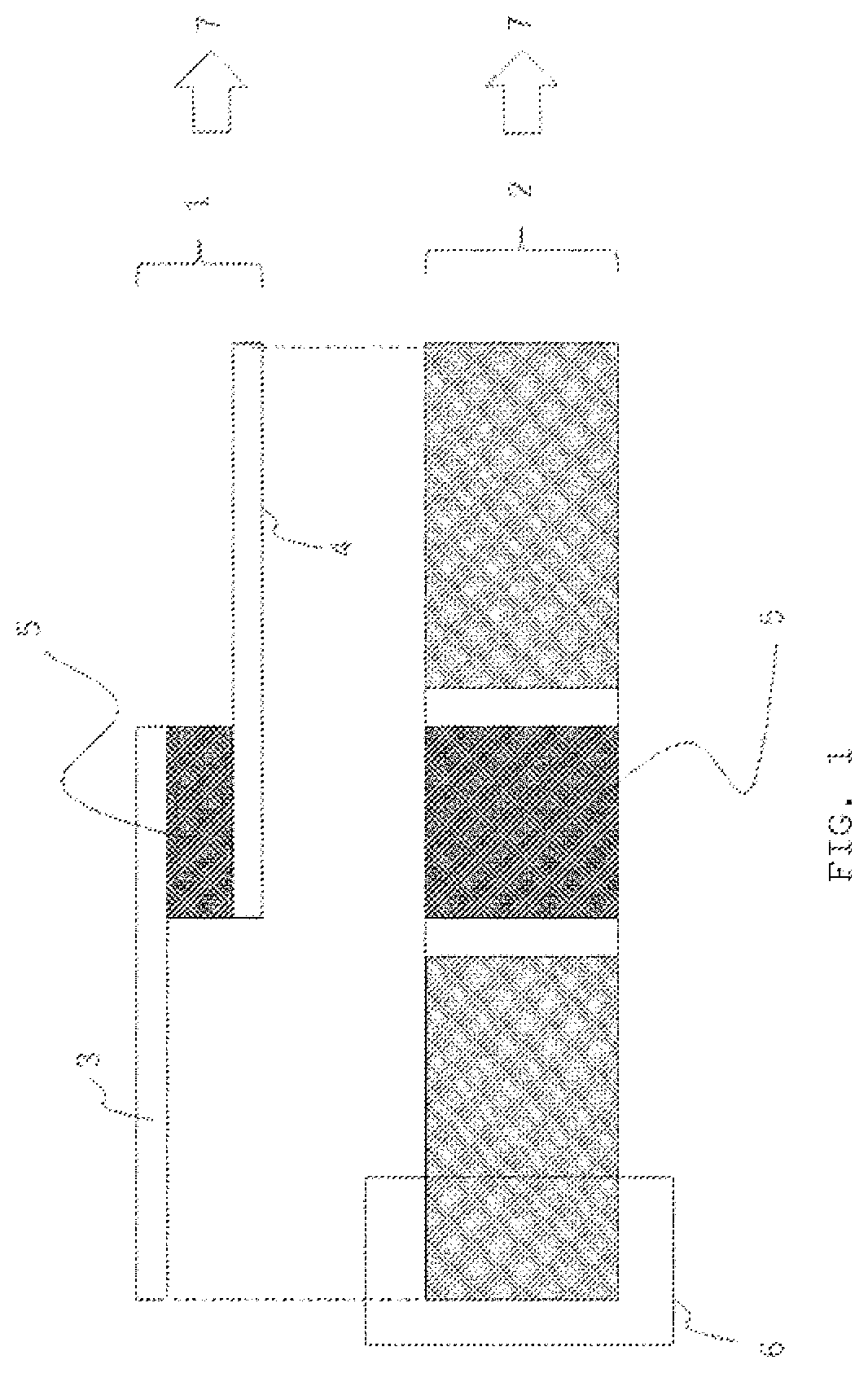Adhesive, laminated film, and method for producing laminated film
a technology of adhesives and laminates, applied in the direction of stoppers, synthetic resin layered products, packaging, etc., can solve the problems of wrinkle-like processing defects, faulty appearance, faulty appearance, etc., and achieve excellent processing appearance and processing suitability, excellent adhesive strength, and excellent product quality
- Summary
- Abstract
- Description
- Claims
- Application Information
AI Technical Summary
Benefits of technology
Problems solved by technology
Method used
Image
Examples
production example 1
[Synthesis of Polyisocyanate (A-1)]
[0153]Into a flask (a reaction vessel) equipped with a stirrer, a thermometer, and a nitrogen gas introduction tube, 41.9 parts of 4,4-diphenylmethane diisocyanate (hereinafter, “diphenylmethane diisocyanate” is abbreviated as “MDI”), 13.0 parts of 2,4′-MDI, and 0.1 part of xylylene diisocyanate (hereinafter, abbreviated as “XDI”) were charged, and the mixture was stirred under nitrogen gas and was heated up to 60° C. To the mixture, 20.0 parts of a bifunctional polypropylene glycol (hereinafter, abbreviated as “PPG”) with a number average molecular weight of 400 and 25.0 parts of a bifunctional PPG with a number average molecular weight of 2,000 were added dropwise in a few separate batches, and the mixture was raised in temperature up to 80° C. and was stirred for 5 to 6 hours to end a urethanization reaction. The obtained polyisocyanate had an NCO group content of 14% and a melt viscosity at 40° C. of 1,500 mPa·s. Hereinafter, this polyisocyanat...
production example 2
[Synthesis of Polyisocyanate (A-2)]
[0154]Into a flask (a reaction vessel) equipped with a stirrer, a thermometer, and a nitrogen gas introduction tube, 50.0 parts of MDI and 10.0 parts of a biuret body of HDI were charged, and the mixture was stirred under nitrogen gas and was heated up to 60° C. To the mixture, 5.0 parts of a bifunctional PPG with a number average molecular weight of 400 and 35.0 parts of a bifunctional PPG with a number average molecular weight of 1,000 were added dropwise in a few separate batches, and the mixture was raised in temperature up to 80° C. and was stirred for 5 to 6 hours to end a urethanization reaction. The obtained polyisocyanate had an NCO group content of 14.0% and a melt viscosity at 40° C. of 1,400 mPa·s. Hereinafter, this polyisocyanate will be abbreviated as A-2.
production example 3
[Synthesis of Polyisocyanate (A-3)]
[0155]Into a flask (a reaction vessel) equipped with a stirrer, a thermometer, and a nitrogen gas introduction tube, 60.0 parts of MDI was charged, which was stirred under nitrogen gas and was heated up to 60° C. To MDI, 5.0 parts of a bifunctional PPG with a number average molecular weight of 400 and 35.0 parts of a bifunctional PPG with a number average molecular weight of 1,000 were added dropwise in a few separate batches, and the mixture was raised in temperature up to 80° C. and was stirred for 5 to 6 hours to end a urethanization reaction. The obtained polyisocyanate had an NCO group content of 14.0% and a melt viscosity at 40° C. of 1,500 mPa·s. Hereinafter, this polyisocyanate will be abbreviated as A-3.
PUM
| Property | Measurement | Unit |
|---|---|---|
| Temperature | aaaaa | aaaaa |
| Length | aaaaa | aaaaa |
| Time | aaaaa | aaaaa |
Abstract
Description
Claims
Application Information
 Login to View More
Login to View More - R&D
- Intellectual Property
- Life Sciences
- Materials
- Tech Scout
- Unparalleled Data Quality
- Higher Quality Content
- 60% Fewer Hallucinations
Browse by: Latest US Patents, China's latest patents, Technical Efficacy Thesaurus, Application Domain, Technology Topic, Popular Technical Reports.
© 2025 PatSnap. All rights reserved.Legal|Privacy policy|Modern Slavery Act Transparency Statement|Sitemap|About US| Contact US: help@patsnap.com

